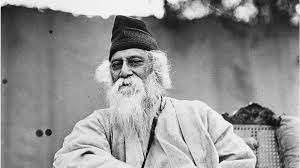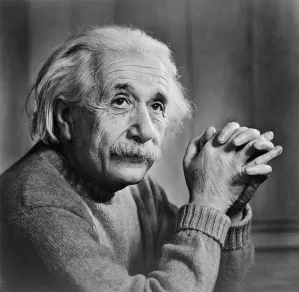
Three major religious holidays this year happened at the same time. Those who think that the reconciliation of religion and science would be a way for humanity to successfully face climate change, the fair distribution of resources and the adaptation of society to technological changes are not rare.
In a rare occurrence, which occurs only every thirty-three years, the three major holidays of the monotheistic religions – Judaism, Christianity and Islam – happened at the same time this year. Last Friday and this Friday, Christians of the western and eastern churches commemorate the crucifixion of Jesus, and on Sunday they celebrate Easter, marking their faith in his resurrection. Also, on the previous Friday, the Jews celebrated the eve of Passover, commemorating the exodus of the Israelites from Egypt and the end of their slavery. That same weekend, Muslims around the world marked another Friday, their weekly holiday, as part of the month of Ramadan, which began on April 2 and ends on May 3.
This rare merging of holidays is possible because unlike the Christian calendar, which is determined by the movement of the sun, the Islamic calendar is aligned with the moon and the lunar year. Twelve months in the solar year last 365, in the lunar year, on the other hand, only 354 days. Thus, the Islamic holiday cycle follows the Western calendar for three decades.

Easter is celebrated on the first Sunday after the first full moon after the vernal equinox. It is held with church services and traditional meals. The holiday is also an occasion for celebration in the commercial sector through the sale of Easter fashion products, Easter baskets and chocolate bunnies. Many Christians also practice Great Lent, which begins 40 days before Easter. The idea is that the renunciation for Lent reflects the sacrifice of Jesus of Nazareth during his 40 days in the desert. Great Lent begins with Ash Wednesday, continues with the observance of Good Friday, the day of Jesus’ crucifixion, and Easter Sunday, the day of his alleged resurrection.
Ramadan is celebrated during the ninth month of the Islamic calendar, fasting from dawn to sunset. It is a period in which Muslims seek forgiveness for sins committed, pray for spiritual guidance, and use the month to refocus on their faith through self-restraint and good deeds. Passover is an eight-day festival of the Jews, whose observance includes abstaining from leavened foods, observing days of rest, and retelling the stories of the exodus from Egypt. The Seder, the traditional Passover meal, is held on the first night of Passover.
This year, Vaisakhi, the great holiday of another monotheistic religion – Sikhism, was held on the same days. On April 13, the Sikhs celebrated with this holiday the creation of the Khalsa Panth, an order of initiated Sikhs dedicated to the service of the One Creator and humanity, founded in 1699. Before that year, this date was celebrated as a harvest festival in the Punjab region, and many observe it not only as a religious, but also as a cultural holiday.
Tao of Psysics
Besides such an impressive conjunction of important religious holidays can serve as a big metaphor and an opportunity for noble and more than necessary calls for reason, brotherhood and understanding among all people and stopping conflicts and wars, imperial ones and religious ones, at the same time it can also be an occasion to shed more light on another great divide within contemporary society – that between religion and science.
After a long, centuries-old tradition of the sharpest conflicts in which, as a rule, science and scientists suffered, many believe that the time has come for these two, in many aspects, opposing views of reality to find points of contact or at least ways for peaceful coexistence. Those who think that such a historical reconciliation, no matter how much the term is overused, is the only way for humanity to successfully face the biggest challenges such as climate change, the fair distribution of resources and the adaptation of society to frenetic technological changes.
One of the first steps in the 20th century in this direction was made by the American physicist of Austrian origin Frittjof Capra. During his travels in Asia, he noticed great similarities in the way the religious and philosophical schools of the East described reality, and the language used by modern physics for the same purpose. In the following years, he translated these insights into a book that has preserved its iconic status to this day. Capra published his Tao of Physics: Exploring the Parallels between Modern Physics and Eastern Mysticism in 1975 in New York. The book became an instant hit, especially in artistic and intellectual circles, and over time has seen numerous reprints, and has been translated into 23 languages around the world.
In the atmosphere of awakening the interest of the Western public in the traditional philosophical, religious and artistic concepts of the East, The Tao of Physics, somewhat surprisingly, also met with a lot of positive reactions from the scientific community. Nevertheless, there were completely expected negative reactions from the ranks of scientists, who had absolutely no right to put their methodical scientific work on the same level with the discoveries made in the flash of religious revelation.

Thus Nobel Laureate Leon M. Lederman, a physicist and former director of Fermilab, criticized The Tao of Physics and several similar books that appeared at the same time, such as The God Particle, by Garry Zukava: “Although they begin with reasonable descriptions of quantum physics [the authors of these books] later they construct elaborate elaborations completely devoid of understanding how carefully theory and experiment are woven together and how much blood sweat and tears go into each painful advance.”
Capra later summarized his motivations for writing the book: “Science does not need mysticism, and mysticism does not need science either.” But people need both.”
During his research, he recognized two basic principles in modern physics, which were also constant motifs of Eastern philosophies – the fundamental interconnectedness and interdependence of all phenomena and the essential dynamic nature of reality. Capra talked about the ideas from the book in 1972 with the famous physicist Werner Heisenberg in one of his interviews:
“I visited him several times in Munich and showed him the entire manuscript, chapter by chapter. He was very interested and open. He told me that he was aware of the parallels I wrote about from before. While working on quantum theory, he traveled to India and was the guest of Rabindranath Tagore with whom he discussed Indian philosophy. Heisenberg told me that these conversations helped me a lot when working on my own theory, convincing him that all these new ideas in quantum physics were not so incredible. He discovered that, in essence, there was an entire culture based on very similar ideas. And Niels Bohr also had similar experiences during his trip to China.”




Leave a comment